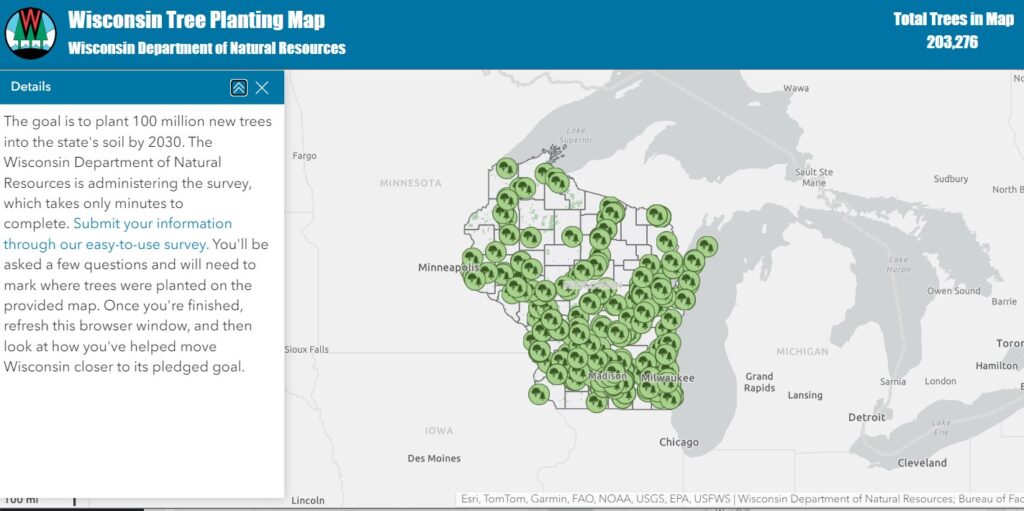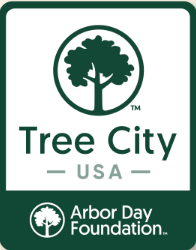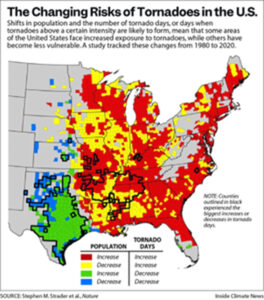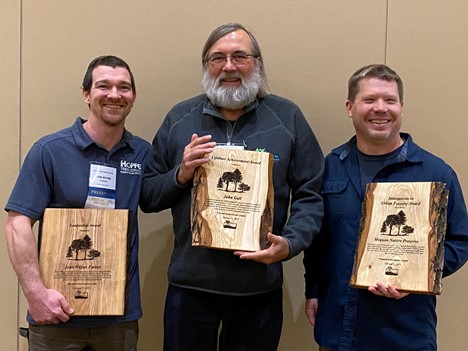By Dan Buckler, DNR Urban Forest Assessment Specialist; Daniel.Buckler@wisconsin.gov or 608-445-4578
Autumn is a wonderful time for planting trees. And after the trees go in the ground, please take a few minutes to document the effort in the Wisconsin Tree Planting Map. The map was designed to help track trees planted to advance the state’s pledge to the Trillion Trees Initiative.


 Tree City USA is an annual recognition program presented by the Arbor Day Foundation that allows communities to publicly demonstrate their continued commitment to the care of their local urban forest. Returning Tree City USA communities are also eligible to apply for Growth Awards. These awards recognize community forestry programs that go above and beyond the four core tenets of Tree City USA.
Tree City USA is an annual recognition program presented by the Arbor Day Foundation that allows communities to publicly demonstrate their continued commitment to the care of their local urban forest. Returning Tree City USA communities are also eligible to apply for Growth Awards. These awards recognize community forestry programs that go above and beyond the four core tenets of Tree City USA.


 Do you remember when you were in fourth grade? Did you receive a tree seedling to plant for Arbor Day?
Do you remember when you were in fourth grade? Did you receive a tree seedling to plant for Arbor Day? The
The  Tree City USA Interactive Map
Tree City USA Interactive Map